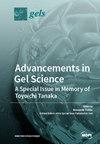Nanocomposite Perfluorosulfonic Acid/Montmorillonite-Na+ Polymer Membrane as Gel Electrolyte in Hybrid Supercapacitors
IF 5
3区 化学
Q1 POLYMER SCIENCE
引用次数: 0
Abstract
Solid-state supercapacitors with gel electrolytes have emerged as a promising field for various energy storage applications, including electronic devices, electric vehicles, and mobile phones. In this study, nanocomposite gel membranes were fabricated using the solution casting method with perfluorosulfonic acid (PFSA) ionomer dispersion, both with and without the incorporation of 10 wt.% montmorillonite (MMT). MMT, a natural clay known for its high surface area and layered structure, is expected to enhance the properties of supercapacitor systems. Manganese oxide, selected for its pseudocapacitive behavior in a neutral electrolyte, was synthesized via direct co-precipitation. The materials underwent structural and morphological characterization. For electrochemical evaluation, a two-electrode Swagelok cell was employed, featuring a carbon xerogel negative electrode, a manganese dioxide positive electrode, and a PFSA polymer membrane serving as both the electrolyte and separator. The membrane was immersed in a 1 M Na2SO4 solution before testing. A comprehensive electrochemical analysis of the hybrid cells was conducted and compared with a symmetric carbon/carbon supercapacitor. Cyclic voltammetric curves were recorded, and galvanostatic charge–discharge tests were conducted at various temperatures (20, 40, 60 °C). The hybrid cell with the PFSA/MMT 10 wt.% exhibited the highest specific capacitance and maintained its hybrid profile after prolonged cycling at elevated temperatures, highlighting the potential of the newly developed membrane.纳米复合全氟磺酸/蒙脱石-Na+聚合物膜作为混合超级电容器中的凝胶电解质
带有凝胶电解质的固态超级电容器已成为电子设备、电动汽车和手机等各种能量存储应用的一个前景广阔的领域。在这项研究中,采用溶液浇注法制造了全氟磺酸(PFSA)离聚物分散体纳米复合凝胶膜,其中既加入了10 wt.%蒙脱石(MMT),也没有加入。蒙脱土是一种以高比表面积和层状结构著称的天然粘土,有望增强超级电容器系统的性能。氧化锰因其在中性电解质中的伪电容行为而被选中,是通过直接共沉淀合成的。对材料进行了结构和形态表征。在电化学评估中,采用了双电极世伟洛克电池,其特点是负极为碳 xerogel,正极为二氧化锰,电解质和隔膜均为 PFSA 聚合物膜。测试前,将膜浸入 1 M Na2SO4 溶液中。对混合电池进行了全面的电化学分析,并与对称碳/碳超级电容器进行了比较。记录了循环伏安曲线,并在不同温度(20、40、60 °C)下进行了电静态充放电试验。含 10 wt.% PFSA/MMT 的混合电池显示出最高的比电容,并且在高温下长时间循环后仍能保持其混合特性,这凸显了新开发的膜的潜力。
本文章由计算机程序翻译,如有差异,请以英文原文为准。
求助全文
约1分钟内获得全文
求助全文

 求助内容:
求助内容: 应助结果提醒方式:
应助结果提醒方式:


